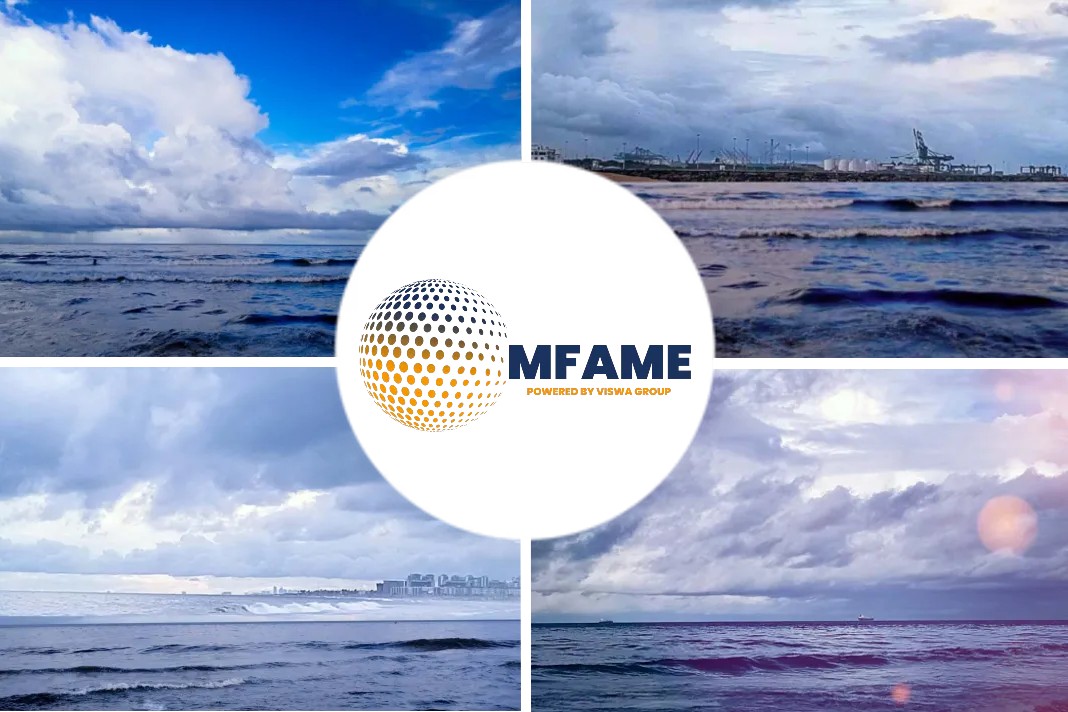
Bound4blue’s suction sail concepts gain momentum, states a Sea Trade Maritime news source.
Seatrade Maritime Logistics Middle East
After installing single 12m-high and fully-tiltable 17m-high suction sails on a longliner and on a general cargo ship respectively, the latter being the largest suction sail ever built and installed, wind-assist and sail developer, bound4blue, is optimistic the future offers even more opportunity in the field of wind-powered maritime propulsion.
In the third in a series of interviews ahead of Seatrade Maritime Logistics Middle East, Cristina Aleixendri, Co-founder and COO, bound4blue, spoke to Seatrade Maritime News about developments in the industry.
“We have already signed agreements with shipowners Louis Dreyfus Armateurs, France, Marubeni Corporation, Japan, and Amasus Shipping, the Netherlands, for three different ship-types: general cargo, ro-ro and bulker,” she said.
“On those projects, we will install more than one sail unit per ship—and of larger size. As you can see, we are setting new records and we will go even further next year, with installations in additional segments—as well as on newbuilds—and for shipowners in other geographic regions.”
bound4blue’s suction sails are suitable for tankers, bulkers, ro-ros, cruise ships, ferries and general cargo vessels, regardless of vessel size or age. “At bound4blue, we offer a portfolio of different eSAIL sizes, ranging from 12m to 36m. We select the optimal size, number and arrangement on deck, depending on the ship,” she said.
“Of course, not all ships can benefit from wind propulsion systems. If there’s no wind, there are no savings. Wind propulsion is not the most suitable solution for container ships, due to lack of space available on deck. The good side of the story is that a great part of the merchant fleet can benefit from this type of solution.”
Number and size of sails installed
“Of course, just as the sails of the past allowed ships to trade around the world, we could also use their modern equivalent to provide 100% of the power required by the vessel. However, feasibility does not mean ease of implementation. Although we are starting to see shipowners designing new ships propelled solely by wind, we are far from seeing an industry standard, as the technology poses several challenges, especially on the operations side,” she said.
National Aeronautics and Space Administration (NASA)
First studied by the National Aeronautics and Space Administration (NASA) in the 1930s as a means of reducing aircraft fuel consumption, the eSAIL is a new design based on the suction concept. Jacques Cousteau wanted to develop an eco-ship for exploration using wind-assisted propulsion, leading to the development of the first suction sail. Unlike airplane suction wings, such a sail has a thicker profile and uses suction to generate large lift forces.
Essentially, it combines the positive features of a conventional rigid-wing sail—simple operation and excellent capacity upwind—with active boundary layer control techniques based on suction, preventing flow detachment and achieving high lift coefficients, similar to rotors. This results in smaller and lighter sails for equivalent savings.
The difficulty of going from concept to reality involves mastering and correctly grouping knowledge in diverse fields—aerodynamics, naval engineering, shipyard work, ship operation, port operations—to create an optimal product tailored to the requirements of the market.
“Thanks to successfully going through this process, we now have the tools to provide the optimum arrangement of sails that minimises payback period for each ship. We have a holistic approach, looking not only at the sail’s aerodynamic performance but also other factors, such as vessel operation,” she said.
“In designing our technology, we take manufacturing, installation, and human factors—ensuring our products are user friendly and safe, so that the crew is willing to utilise them—into account. I can proudly say that, in the words of our customers, we provide a solution that offers the best balance between fuel savings and costs.”
Did you subscribe to our daily Newsletter?
It’s Free! Click here to Subscribe!
Source: Sea Trade Maritime

















